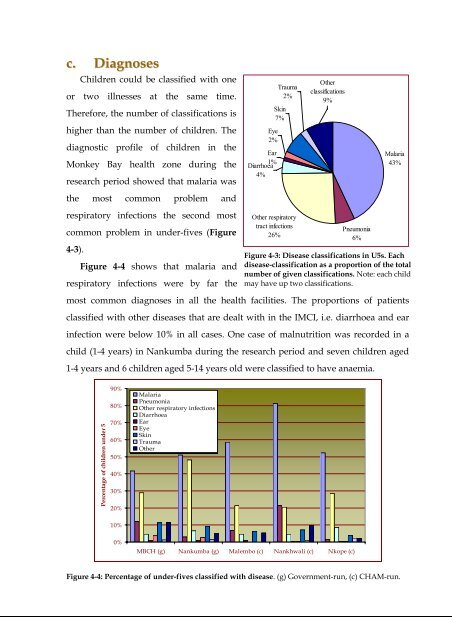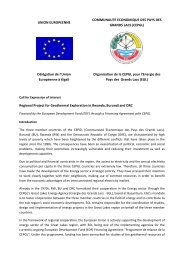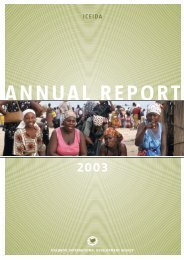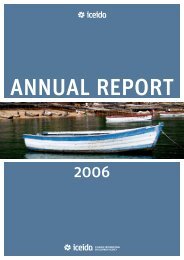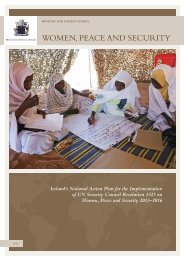The Implementation of Integrated Management of Childhood Illness ...
The Implementation of Integrated Management of Childhood Illness ...
The Implementation of Integrated Management of Childhood Illness ...
You also want an ePaper? Increase the reach of your titles
YUMPU automatically turns print PDFs into web optimized ePapers that Google loves.
c. Diagnoses<br />
Children could be classified with one<br />
or two illnesses at the same time.<br />
<strong>The</strong>refore, the number <strong>of</strong> classifications is<br />
higher than the number <strong>of</strong> children. <strong>The</strong><br />
diagnostic pr<strong>of</strong>ile <strong>of</strong> children in the<br />
Monkey Bay health zone during the<br />
research period showed that malaria was<br />
the most common problem and<br />
respiratory infections the second most<br />
common problem in under-fives (Figure<br />
4-3).<br />
Figure 4-4 shows that malaria and<br />
respiratory infections were by far the<br />
Ear<br />
1%<br />
Diarrhoea<br />
4%<br />
Other respiratory<br />
tract infections<br />
26%<br />
Pneumonia<br />
6%<br />
most common diagnoses in all the health facilities. <strong>The</strong> proportions <strong>of</strong> patients<br />
classified with other diseases that are dealt with in the IMCI, i.e. diarrhoea and ear<br />
infection were below 10% in all cases. One case <strong>of</strong> malnutrition was recorded in a<br />
child (1-4 years) in Nankumba during the research period and seven children aged<br />
1-4 years and 6 children aged 5-14 years old were classified to have anaemia.<br />
Eye<br />
2%<br />
Trauma<br />
2%<br />
Skin<br />
7%<br />
Other<br />
classifications<br />
9%<br />
Malaria<br />
43%<br />
Figure 4-3: Disease classifications in U5s. Each<br />
disease-classification as a proportion <strong>of</strong> the total<br />
number <strong>of</strong> given classifications. Note: each child<br />
may have up two classifications.<br />
Percentage <strong>of</strong> children under 5<br />
90%<br />
80%<br />
70%<br />
60%<br />
50%<br />
40%<br />
30%<br />
20%<br />
Malaria<br />
Pneumonia<br />
Other respiratory infections<br />
Diarrhoea<br />
Ear<br />
Eye<br />
Skin<br />
Trauma<br />
Other<br />
10%<br />
0%<br />
MBCH (g) Nankumba (g) Malembo (c) Nankhwali (c) Nkope (c)<br />
Figure 4-4: Percentage <strong>of</strong> under-fives classified with disease. (g) Government-run, (c) CHAM-run.<br />
33


